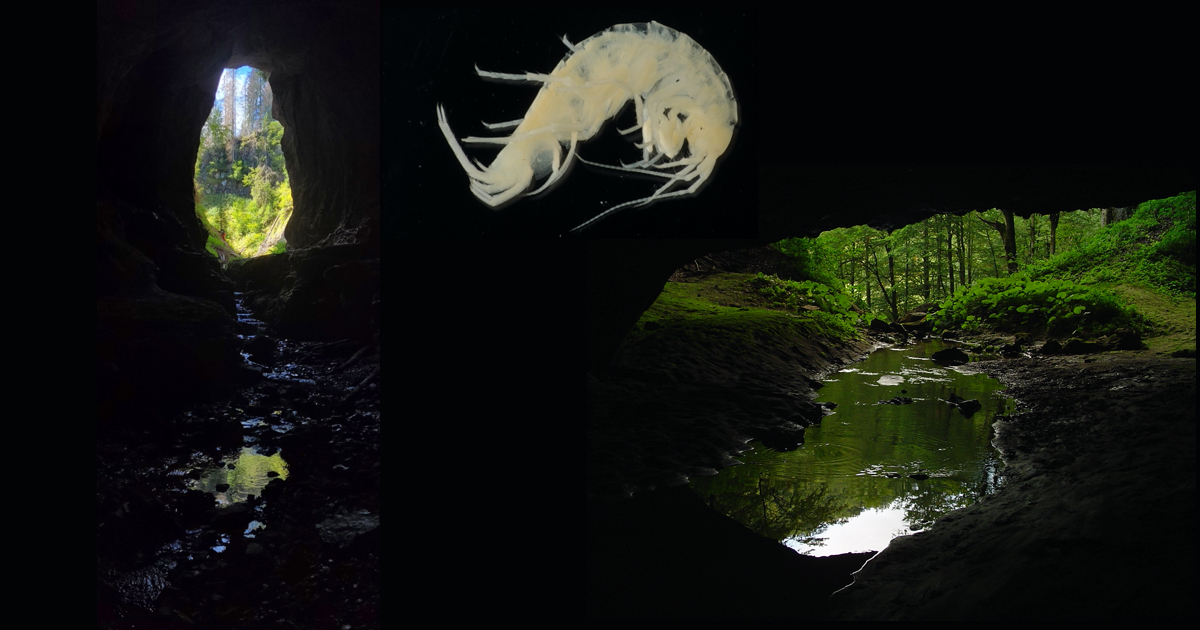Cave Biodiversity and Conservation
A special issue of Diversity (ISSN 1424-2818). This special issue belongs to the section "Biodiversity Conservation".
Deadline for manuscript submissions: closed (1 November 2022) | Viewed by 6001

Special Issue Editor
Special Issue Information
Dear Colleagues,
Caves are unique and fragile environments. In spite of the apparent hostile conditions, caves, and the subsurface in general, are not deprived of life. For cave animals, these living conditions are not hostile, but, on the contrary, once brought up to the surface, they will not survive. These animals are strictly adapted to the dark cave environment, which is characterized by a relative constancy of the environmental factors. They are thus stenobiontic organisms. Because of the lack of light, cave animals have lost their sight ability, or in most cases they lost the entire visual apparatus. They compensate partly this deficiency by longer body appendages provided with fine tactile receptors. Also due to absence of light, cave animals lack tegumentary pigments, as they do not need to protect against the harmful sun rays. Cave animals do not need to display bright colors, which are worn by their relatives at the surface to, for example, alert the predators about their skin poisons, or impress the females during mating. Photosynthetic plants are obviously absent underground; thus, the functioning of subsurface ecosystems depends on matter and energy input from the surface through the percolating water. Few exceptions of chemoautotrophically based cave ecosystems exist, where microorganisms exploit inorganic compounds originating from deeper aquifers. Cave microbes, either indigenous or allochthonous, stay at the basis of every food web in cave ecosystems. Microbes can live freely in water or cave soil, thriving on the few and least diverse organic matter, or they may gather sometimes in complex biofilms. Cave animals, either terrestrial or aquatic, cannot afford being specialists on some particular type of food, they cannot refuse the available resources, scarce anyway. They are rather omnivorous. Cave animals adopt a K-selection strategy. Compared to their relatives at the surface, which are rather r-strategists, cave animals live longer, they have a slow sexual maturation and a low reproduction and metabolic rates. Almost all juveniles survive and reach the adulthood after long ontogenetic stages. They form relatively stable populations with poor colonization abilities. Due to geographical isolation of limestone mountain massifs, where caves are present, dispersion of cave animals is often hampered by various geological barriers. Speciation in these settings is largely favored and the biodiversity in subsurface environments is sometimes very high. Usually, knowledge on the presence of certain animal species in certain particular places depends and is directly proportional with the presence of the scientists. The vast expanse of limestone areas is far from being fairly covered by scientists work. Therefore, biodiversity research in cave ecosystems is highly encouraged, as this type of research is highly desired with the final aim of biodiversity conservation. Consequently, throughout this special issue, we welcome papers with various topics regarding the biodiversity of cave ecosystems, such as:
- Systematics and taxonomy of cave animal species
- Population genetics and ecology
- Microbial community analysis
- Interactions between cave fauna and microorganisms
Dr. Traian Brad
Guest Editor
Manuscript Submission Information
Manuscripts should be submitted online at www.mdpi.com by registering and logging in to this website. Once you are registered, click here to go to the submission form. Manuscripts can be submitted until the deadline. All submissions that pass pre-check are peer-reviewed. Accepted papers will be published continuously in the journal (as soon as accepted) and will be listed together on the special issue website. Research articles, review articles as well as short communications are invited. For planned papers, a title and short abstract (about 100 words) can be sent to the Editorial Office for announcement on this website.
Submitted manuscripts should not have been published previously, nor be under consideration for publication elsewhere (except conference proceedings papers). All manuscripts are thoroughly refereed through a single-blind peer-review process. A guide for authors and other relevant information for submission of manuscripts is available on the Instructions for Authors page. Diversity is an international peer-reviewed open access monthly journal published by MDPI.
Please visit the Instructions for Authors page before submitting a manuscript. The Article Processing Charge (APC) for publication in this open access journal is 2100 CHF (Swiss Francs). Submitted papers should be well formatted and use good English. Authors may use MDPI's English editing service prior to publication or during author revisions.
Keywords
- Cave fauna
- Cave and groundwater microbial communities
- Subsurface biodiversity conservation
Benefits of Publishing in a Special Issue
- Ease of navigation: Grouping papers by topic helps scholars navigate broad scope journals more efficiently.
- Greater discoverability: Special Issues support the reach and impact of scientific research. Articles in Special Issues are more discoverable and cited more frequently.
- Expansion of research network: Special Issues facilitate connections among authors, fostering scientific collaborations.
- External promotion: Articles in Special Issues are often promoted through the journal's social media, increasing their visibility.
- e-Book format: Special Issues with more than 10 articles can be published as dedicated e-books, ensuring wide and rapid dissemination.
Further information on MDPI's Special Issue policies can be found here.





